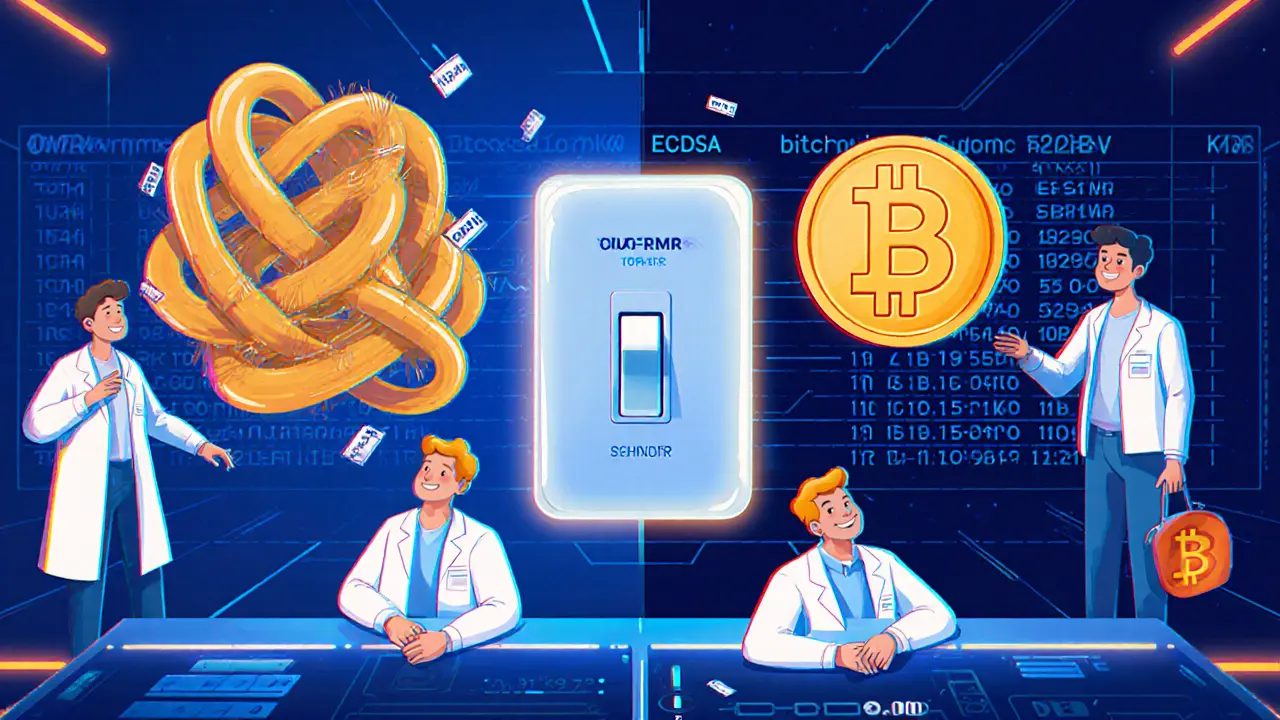A clear, jargon‑free comparison of Schnorr signatures and ECDSA in Bitcoin, covering size, speed, privacy, multisig, and future outlook.
Taproot: Bitcoin’s Upgrade for Privacy, Scaling, and Smart Contracts
When working with Taproot, a Bitcoin protocol upgrade that merges privacy, scaling, and flexible scripting. Also known as Bitcoin Taproot, it activates advanced signature schemes and Merkle‑based script trees.
At its core, Taproot builds on the Bitcoin, the first decentralized digital currency network, extending the groundwork laid by SegWit, the earlier transaction‑size reduction upgrade. The new layer lets users lock funds with a single public key while keeping the underlying contract hidden unless execution is required. This simple‑looking change actually enables three big wins: better privacy because most transactions look identical, lower fees thanks to smaller data footprints, and the ability to embed more complex smart‑contract logic without blowing up block space.
One of the most powerful tools Taproot introduces is Schnorr signatures, a cryptographic scheme that replaces the older ECDSA model. Schnorr allows signature aggregation, meaning multiple parties can combine their approvals into a single proof. The result is a slimmer transaction that still satisfies the network’s consensus rules, directly supporting the fee‑saving promise of Taproot. Moreover, because aggregation reduces the data needed for each signature, it makes it harder for outside observers to link multiple inputs to the same user, enhancing the privacy layer already hinted at by Merkleized scripts.
Taproot’s impact ripples through other Bitcoin concepts. For instance, a more efficient transaction format helps the network cope with the ongoing tension between block rewards and transaction fees – a balance highlighted in discussions about the block reward vs transaction fees dynamic. When block subsidies halve, miners rely more on fee revenue; lower fees from Taproot can keep the network attractive for users while still offering miners adequate compensation. Likewise, the upgrade strengthens Bitcoin’s defense against double‑spending. By consolidating multiple signatures into one and reducing the data surface, it shortens the time needed for confirmations, making it tougher for attackers to exploit latency gaps.
The collection below pulls together guides that flesh out these ideas. You’ll find a technical walk‑through of blockchain immutability, a clear explanation of how Bitcoin prevents double‑spending, insights into the halving cycles that drive market moves, and practical tips for navigating DeFi opportunities that benefit from Taproot’s lower fees and richer scripting. Whether you’re a fresh entrant trying to grasp the basics or a seasoned trader looking to leverage the upgrade for smarter strategies, the articles ahead give you actionable context and deeper understanding of how Taproot reshapes the Bitcoin ecosystem.

